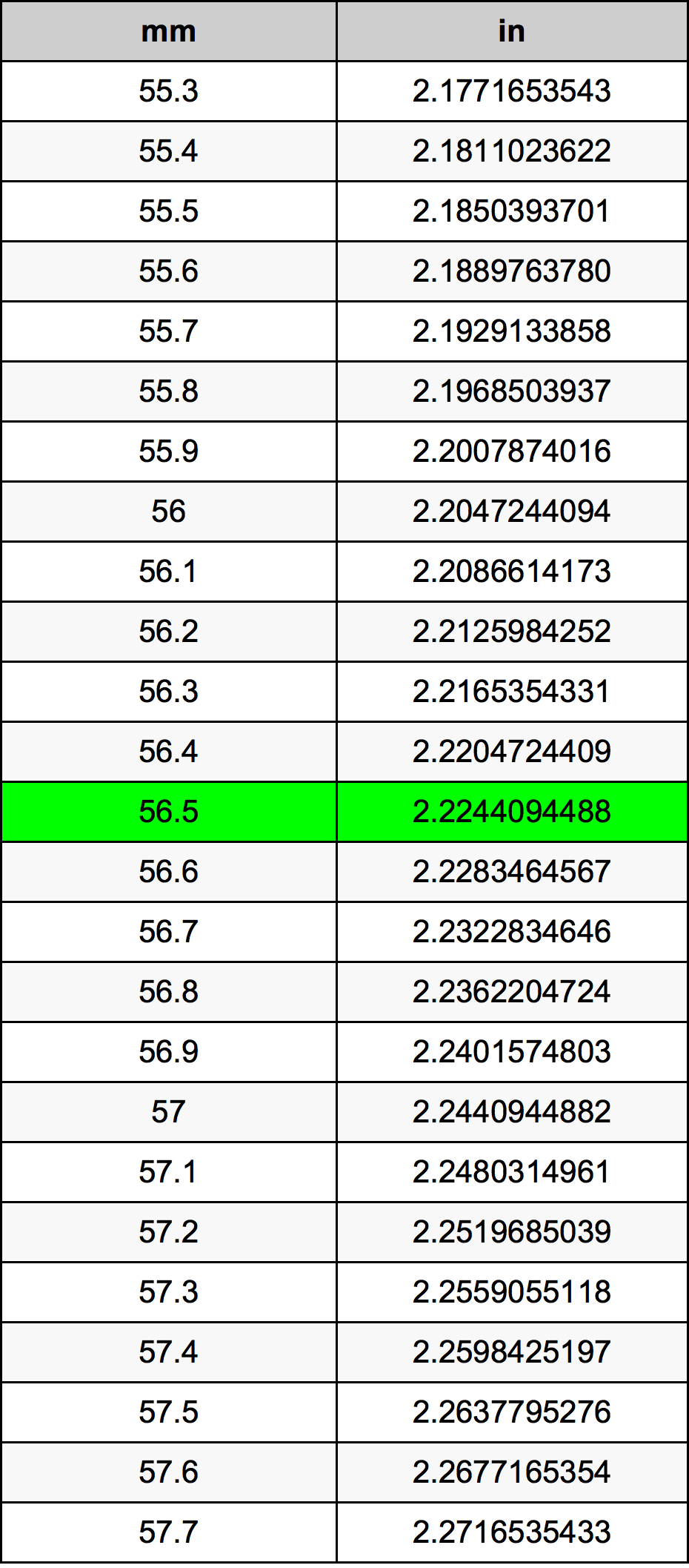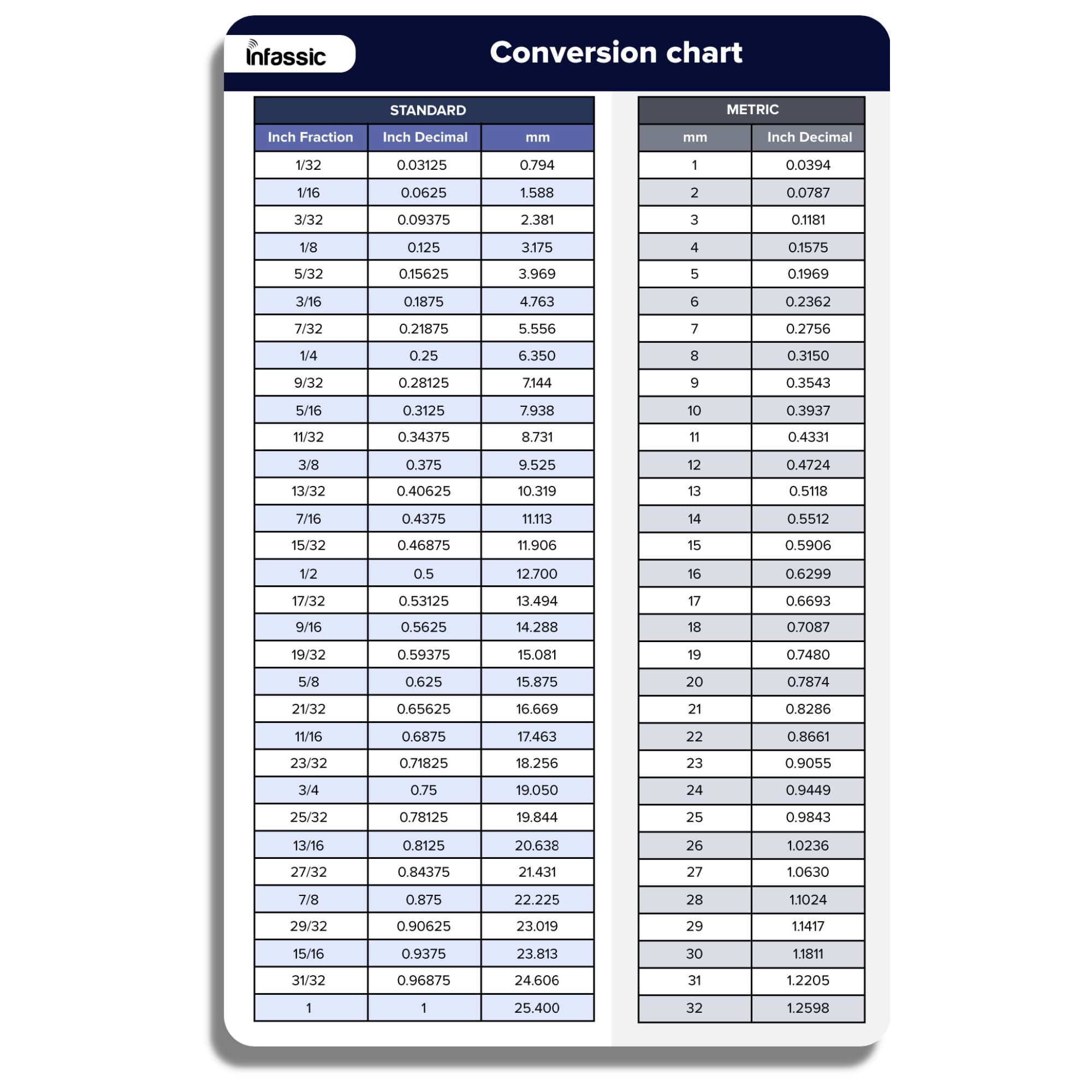5.56mm To Inches Conversion: The Ultimate Guide [Year]
Ever find yourself lost in a maze of numbers when trying to understand the caliber of a firearm? It's a surprisingly common issue, stemming from the fact that the firearms industry uses both inches and millimeters to describe bore diameters. This discrepancy can lead to confusion, especially when dealing with cartridges like the 5.56 NATO, which is often associated with the .223 Remington.
The crux of the matter lies in converting between these two units of measurement. Many shooters grapple with this conversion, particularly when trying to reconcile the seemingly interchangeable 5.56 mm and .223 inch designations. The challenge arises because a direct conversion of 5.56 mm to inches yields approximately 0.219 inches, not the expected 0.223 inches. Similarly, converting .223 inches back to millimeters results in roughly 5.66 mm, a slight deviation from the 5.56 mm standard. This article will delve into the nuances of these conversions, explore the reasons for the apparent discrepancies, and provide clarity for those seeking to understand the relationship between these measurements.
| Category | Information |
|---|---|
| Cartridge Designation | 5.56 NATO (often linked with .223 Remington) |
| Bore Diameter Measurement Systems | Inches and Millimeters |
| Conversion Factor (Inch to mm) | 1 inch = 25.4 mm |
| Direct Conversion (5.56 mm to inches) | Approximately 0.219 inches |
| Direct Conversion (.223 inches to mm) | Approximately 5.66 mm |
| Key Issue | Discrepancy between direct conversions and the perceived equivalence of 5.56 mm and .223 inch cartridges. |
| Further Resources | 5.56 NATO Wikipedia Article |
The confusion often begins with the fundamentals: understanding the two different systems for measuring bore diameter. The first, the caliber system, expresses the bore diameter in inches, while the second uses millimeters. To further complicate matters, the term "caliber" itself can be used loosely, sometimes referring to the bullet diameter and other times the bore diameter, adding another layer of potential misunderstanding.
- Sondra Blust Leaks The Truth The Impact Whats Next
- Kannada Box Office Highest Grossing Kannada Films Of 2024 Ranked
So, how do you accurately convert 5.56 millimeters to inches? The basic principle is straightforward: divide the millimeter value by 25.4, as there are precisely 25.4 millimeters in one inch. Therefore, to convert 5.56 mm to inches, the calculation is 5.56 / 25.4. This yields approximately 0.21889763 inches, which is often rounded to 0.219 inches for simplicity. But this result begs the question: why isn't it 0.223 inches, the value often associated with the .223 Remington cartridge?
The answer lies in the tolerances and specific measurement points. While the 5.56 NATO and .223 Remington are related, they are not identical. The .223 designation is nominal. In the case of .223/5.56, the land diameter is actually 5.56mm. The 5.56mm is the dimension between lands on the barrel. The .223 is the dimension between the opposing grooves. Differences exist in chamber dimensions, pressure specifications, and even the way the bore diameter is measured. These subtle variations can account for the discrepancy between the direct conversion and the perceived equivalence.
To illustrate further, let's consider the reverse conversion: converting .223 inches to millimeters. Using the same conversion factor (1 inch = 25.4 mm), we multiply 0.223 by 25.4, resulting in 5.6642 mm. This figure highlights that the .223 inch measurement is not a precise equivalent of 5.56 mm; it's slightly larger. This difference, although seemingly small, can contribute to the confusion surrounding the two designations.
- Vegamovies Nl Is It Safe Risks Legal Alternatives 2024 Guide
- Movierulz Free Movies Find What You Need Updated 2025
It's crucial to remember that these conversions often involve approximations. Rounding errors can occur, especially when dealing with multiple decimal places. For precise applications, it's always best to use a calculator or online converter that provides a high degree of accuracy. Many online tools can perform these conversions, providing results in various formats, including decimal, feet and inches, plain English, percentage, fraction, and scientific notation.
Understanding the relationship between millimeters and inches is fundamental in many fields beyond firearms, including engineering, manufacturing, and construction. The metric system, based on millimeters and meters, is widely used internationally, while the imperial system, using inches and feet, is more common in the United States. Therefore, the ability to convert between these units is essential for effective communication and collaboration across different industries and regions.
To provide a clearer understanding, consider the following examples of converting millimeters to inches:
- 1 mm to inches = 0.03937 inches
- 10 mm to inches = 0.3937 inches
- 20 mm to inches = 0.7874 inches
- 30 mm to inches = 1.1811 inches
- 40 mm to inches = 1.5748 inches
- 50 mm to inches = 1.9685 inches
- 100 mm to inches = 3.93701 inches
- 200 mm to inches = 7.87402 inches
These conversions demonstrate the linear relationship between millimeters and inches. As the millimeter value increases, the corresponding inch value increases proportionally.
The issue of conversion is further highlighted when considering other cartridge sizes. For instance, 56.5 millimeters is equal to 2.2244094488 inches (56.5mm = 2.2244094488in). This conversion, like the 5.56 mm example, involves dividing the millimeter value by 25.4. Similarly, converting 556 millimeters to inches yields 21.8897637795 inches (556mm = 21.8897637795in). These examples underscore the importance of accurate conversion for understanding and comparing different cartridge sizes.
The conversion factor of 1 inch = 25.4 mm is the cornerstone of these calculations. To convert from millimeters to inches, you multiply the millimeter value by 0.0393700787 (which is the reciprocal of 25.4). For example, to convert 20mm to inches: 20 mm 0.0393700787 in / mm = 0.7874015748 in. Conversely, to convert inches to millimeters, you multiply the inch value by 25.4. For example, converting 2 inches to mm: 2 in 25.4 mm / in = 50.8 mm.
It's also important to acknowledge that the firearms industry uses different standards for measuring bore and bullet diameters. In some cases, the diameter is measured between the lands (the raised portions of the rifling), while in others, it's measured between the grooves (the recessed portions). This variation in measurement techniques can further contribute to the apparent discrepancies in conversions.
Ultimately, the key to understanding the seemingly contradictory conversions between 5.56 mm and .223 inches lies in recognizing that these are nominal values that are near the exact values. The discrepancy arises from differences in measurement standards, rounding errors, and the specific characteristics of the cartridges themselves. While a direct conversion of 5.56 mm to inches yields approximately 0.219 inches, the .223 Remington cartridge is often associated with a slightly larger diameter due to the nuances of its design and measurement.
The 5.56 NATO cartridge is a rimless bottlenecked cartridge with a diameter of 5.56 mm (0.219 inches) and a case length of 44.7 mm (1.76 inches). It has a maximum overall length of 57.4 mm (2.26 inches) and a maximum case capacity of 1.85 grams. The cartridge is designed to operate at a maximum pressure of 62,366 psi (430 bar). Knowing these specifications can also aid in understanding the cartridge's dimensions in both metric and imperial units.
Why then do the conversions come out "wrong"? If you convert 5.56 mm into inches, the result is .219, not .223. And, conversely, when you convert .223 inches into millimeters, the result is 5.66 mm, not 5.56 mm. As mentioned previously, this is due to the fact that these values are the nominal values that are very near the exact values, but aren't exact. It can be frustrating when the simple conversion factor of 1 inch = 25.4 mm doesn't seem to produce the expected results. But, by understanding the subtle nuances of the measurement standards, the rounding, and specific dimension of the cartridges, the confusion can be minimized.
In conclusion, while the conversion between millimeters and inches is generally straightforward, the firearms industry's use of both units, combined with variations in measurement techniques, can create apparent discrepancies. By understanding these nuances, shooters and enthusiasts can navigate the world of calibers and cartridge dimensions with greater clarity and confidence.

56.5 Millimeters To Inches Converter 56.5 mm To in Converter

Convert MM To INCHES Ultimate Quick Guide!

Mm To Inches Conversion Chart Printable